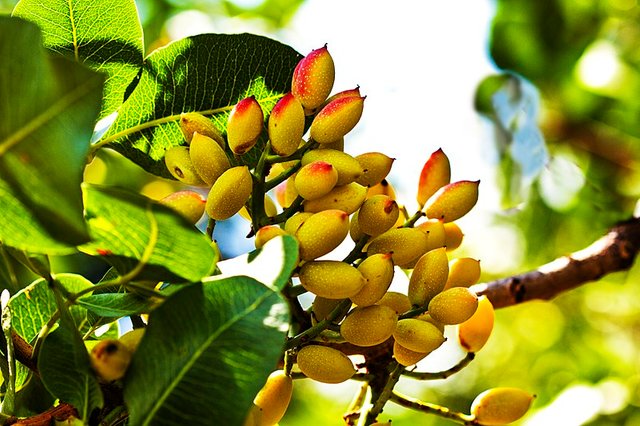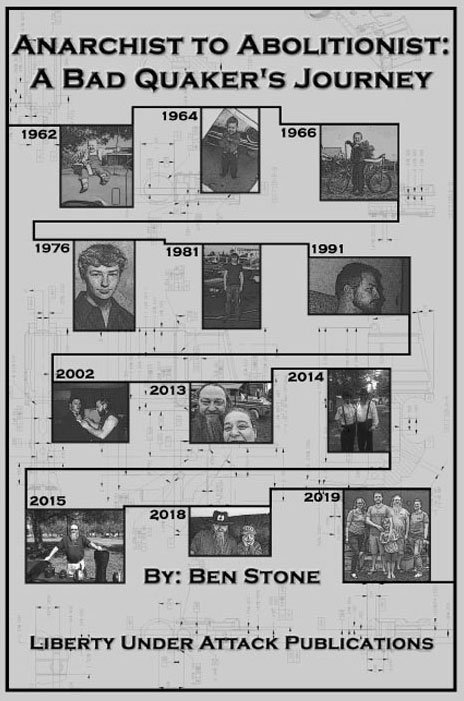Verticillium Wilt
The San Joaquin Valley is a wide and long desert valley with various soil types and, yet, in the last one hundred years, irrigation brought to the valley from the snow packs of the Sierra Nevada mountains has made it a rich farmland with few comparisons around the world. For the first half of the 20th century, cotton was king in the valley along with lettuce, but by the 1970s, a variety of crops were being grown. Asparagus, corn, tomatoes, peppers, garlic, and citrus fruits were expanding the farms. Then, a trend started to develop as Americans discovered pistachios and began importing them in record numbers.

Wikipedia
California Department of Food and Agriculture agents, armed with all the right brochures and flyers, began singing the praises of pistachios, while promising huge profits for future farmers. The CDFA agents actively went from farm to farm promoting the planting of pistachio orchards. The farmers of the San Joaquin responded to this by plowing under their cotton fields and planting pistachio saplings by the tens of thousands. But there was a problem that the government agents were ignorant of, or didn't care to learn about.
There's an illness that's common in cotton, called Verticillium wilt. Normally it's not a problem for California cotton growers, as it takes a few years for the Verticillium fungi to develop to the point that it harms the cotton plants, and since the current method of cotton production treats the cotton as if it were an annual, the fungus never has a chance to develop to the point of damaging the harvest. But it lives harmlessly in the soil of the cotton fields, nonetheless. This is not the case with pistachios. Since pistachios don't even begin to produce until they're several years old, the Verticillium wilt can sit quietly and multiply until, in one season, it suddenly shows up and kills the young trees. And since many of the farmers had planted their pistachio orchards at or around the same time, all the farmers were in a panic as they watched millions of dollars’ worth of young orchards die right before their eyes. And the CDFA agents had no answers.
There was a poison that would kill the fungus, but it was a deadly poison that you needed a license to use, was only allowed to be sold by one company, and had to be mixed with tear gas at the factory before being shipped, to assure no one would breathe it accidentally. Also it had to be injected at least three feet deep in order to be effective, and there was no machine in existence in 1974 that could safely and consistently deliver the poison that deep in the soil without the poison leaking back out of the hole.
That's where my dad comes into the story. As he visited his old friends in and around Coalinga, he heard over and over about the vast losses the farmers were facing from the Verticillium wilt. My dad thought, "Well this is just a mechanical issue. We know where the fungus lives and we know what kills it, we just lack a machine to deliver it. That's not a problem. I'll just make a machine to fix this."
Dad called down to my uncle Arnold in California City and told him to grab the flatbed truck, with all Dad's tools, along with the trencher, and get to Coalinga. Once there, Arnold studied up on the poison and was granted the license to use it. While Arnold did that, Dad rented a machine shop to use at night when the shop was normally closed, and began experimenting with designs. Within a few weeks, Dad had solved the problem and had installed his latest invention on the front of the trencher.
We moved into a house in Coalinga and that fall I attended the 8th grade. During the next ten months, Dad and Arnold went from farm to farm killing Verticillium wilt, saving millions of dollars’ worth of orchards. If I recall, Dad got paid something like $15 per injection. At one injection per tree, a single orchard could mean between $8000 to $10,000, and an orchard that size could be done in a few days.
I'll save you the math; that's a half million dollars/year gross, with less than 3% overhead. So, about $480,000 a year profit. And this was back in the days when a half a million dollars was considered a lot of money. Not a bad little business.
First post & table of contents
If you would like to read the book in its entirety, you can purchase it with cryptocurrency at Liberty Under Attack Publications or find it on Amazon. We also invite you to visit BadQuaker.com, and, as always, thank you for reading.

In the 80's i got to spend some time in turkey, while there i got hooked on pistachios, green fingers all day.
When i got back to the land of round doorknobs i bought some california pistachos and they more resembled wood than what i remembered from turkey.
They have gotten better since, but now the price is killing me.
No more 2usd kilos,...
Downvoting a post can decrease pending rewards and make it less visible. Common reasons:
Submit
Congratulations @badquakerdotcom! You have completed the following achievement on the Steem blockchain and have been rewarded with new badge(s) :
You can view your badges on your Steem Board and compare to others on the Steem Ranking
If you no longer want to receive notifications, reply to this comment with the word
STOPTo support your work, I also upvoted your post!
Vote for @Steemitboard as a witness to get one more award and increased upvotes!
Downvoting a post can decrease pending rewards and make it less visible. Common reasons:
Submit